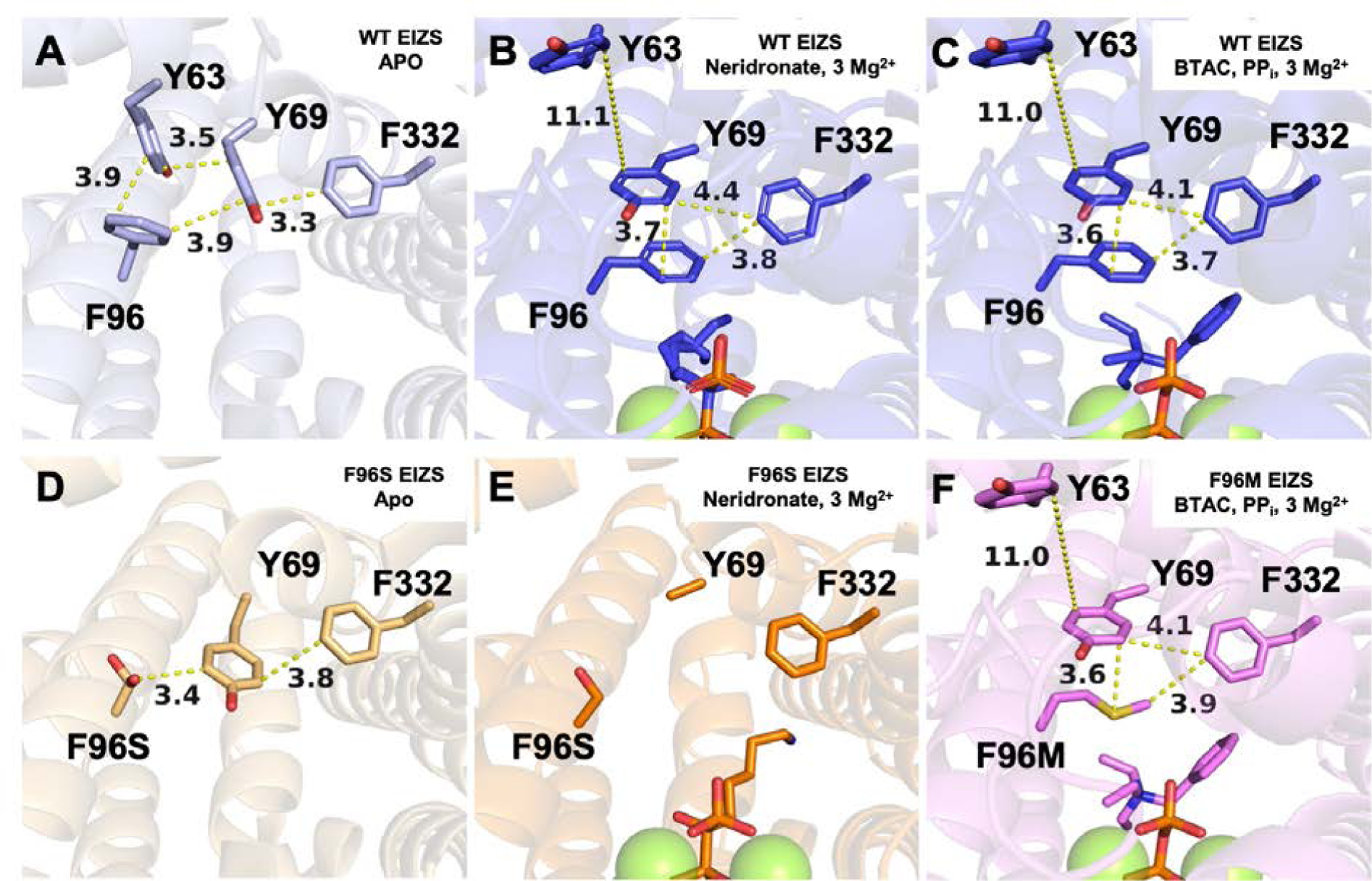Figure 8.

Crystal structures of (A) unliganded wild-type EIZS (PDB 4LTV), (B) wild-type EIZS–Mg2+3–neridronate complex (PDB 7KJF), (C) wild-type EIZS–Mg2+3–PPi–BTAC complex (PDB 3KB9), along with (D) unliganded F96S EIZS (PDB 6AXO), (E) F96S EIZS–Mg2+3–neridronate complex (PDB 7KJE), and (F) F96M EIZS–Mg2+3–PPi–BTAC complex (PDB 7KJG). These structures highlight an aromatic π-stacking network between Y63 of helix B, Y69 of helix C, F96 of helix D, and F332 of helix J. The F96M substitution maintains aromatic π-stacking interactions in the closed active site conformation (F). However, the F96S substitution disrupts the π-stacking network in the open, unliganded conformation (D) and in the liganded conformation (E).
